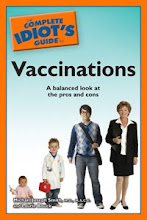It has been legal to use and sell marijuana in California for medical purposes since 1996. To purchase and use medical marijuana to treat or mitigate a serious illness such as chronic pain or cancer, you need a Medical Marijuana Identification Card, obtained by getting a recommendation from your health care provider. Although the Medical Board of California sets standards for health care providers to control which patients get these identification cards, the cards are notoriously easy to obtain.
Proposition 19 takes the medical marijuana law (Proposition 215) one step further, making recreational marijuana use, possession, and cultivation legal for all adults. With or without legislation, the lines between medical and recreational marijuana use are already hopelessly blurred here.
Of course, California's current and proposed laws around marijuana use are in direct opposition to federal marijuana laws. Over the past few years, federal agents have occasionally raided "Cannabis Clubs" that distribute medical marijuana in California and elsewhere. But federal agents have bigger problems to tackle than medical marijuana. In 2009, Attorney General Eric Holder promised to stop raiding medical marijuana sites.
In San Francisco, recreational marijuana use is clearly not prosecuted often. I sometimes come across someone (usually a young adult) smoking marijuana in public, which I don't like, especially if I have my children with me. An NBC reporter from Dallas found a few people smoking it the other day while he was covering the World Series. At least the reporter laughed off the incident, which I think is the best approach. Sometimes you have to pick your battles.
Besides, alcohol consumption, which is far more socially acceptable than marijuana use, is equally unhealthy - just look at information on fetal alcohol syndrome or alcohol-related traffic fatalities. It's a bit hypocritical to make recreational alcohol consumption legal for adults and recreational marijuana consumption illegal for adults. Legalizing marijuana would make it easier to regulate, at least, and still (ideally) keep it out of the hands of minors.



